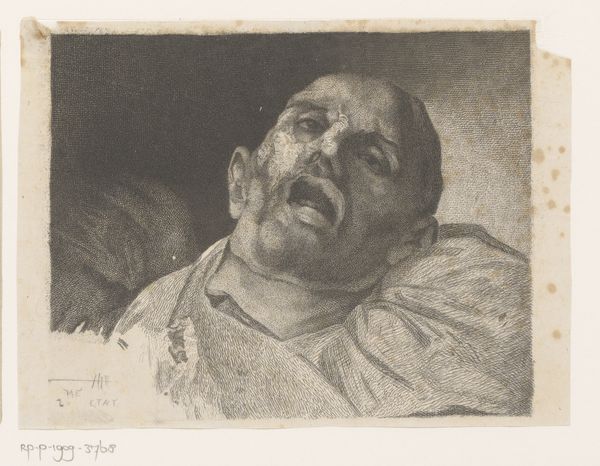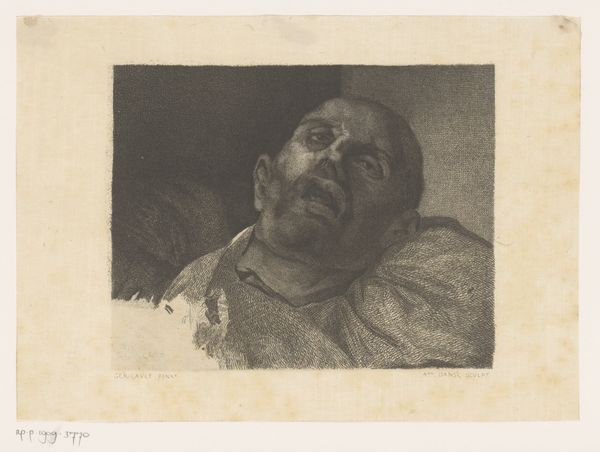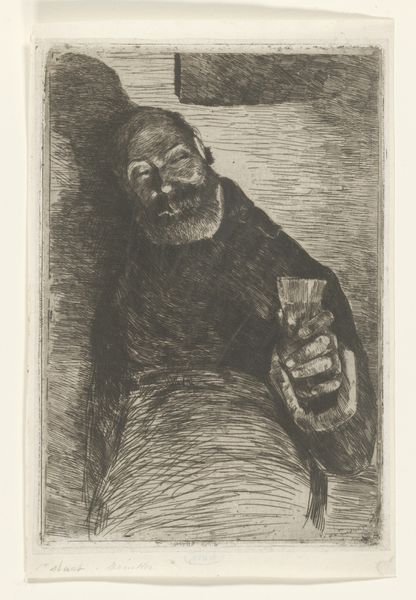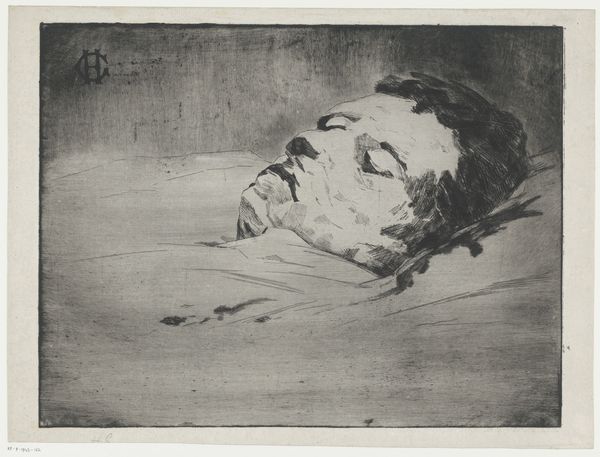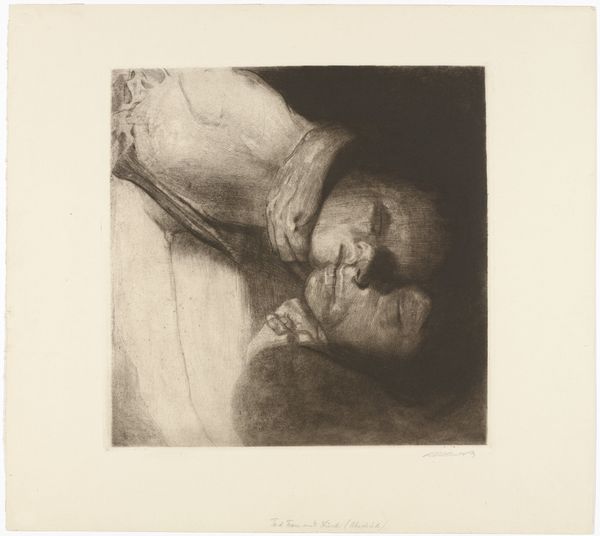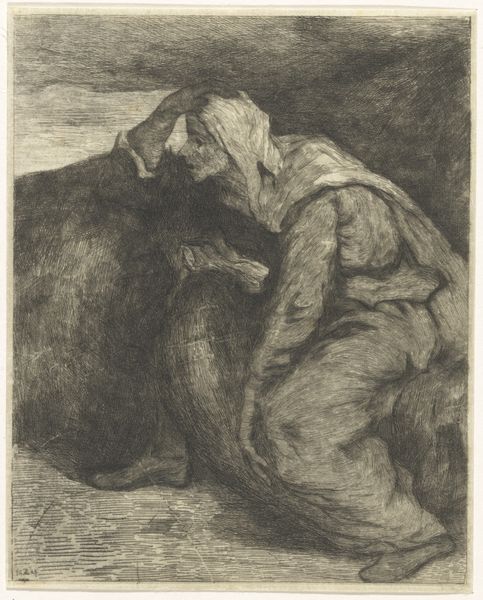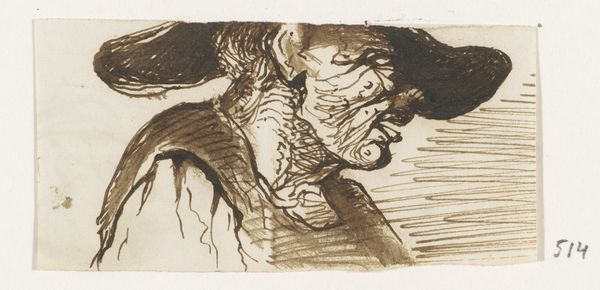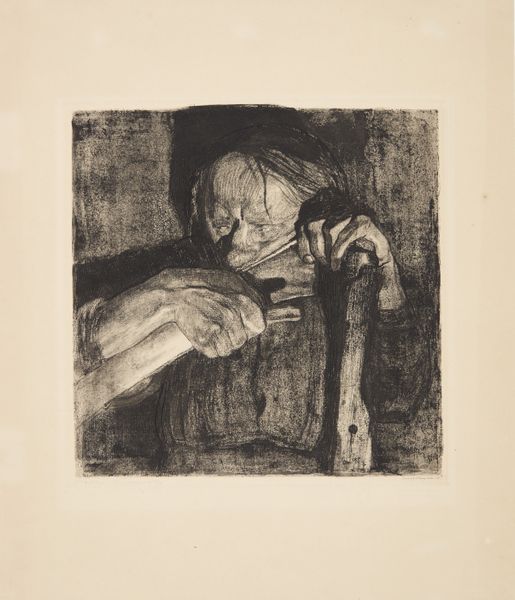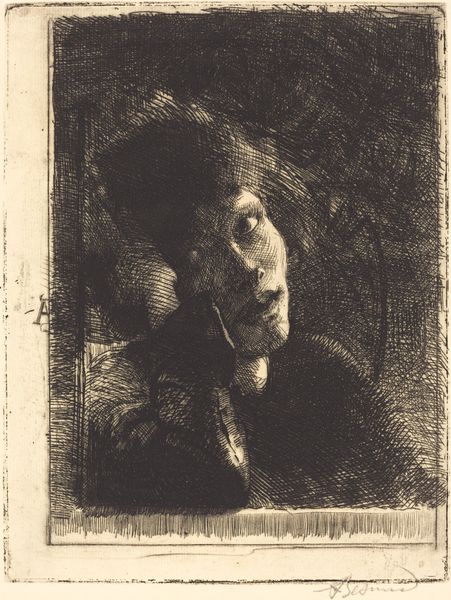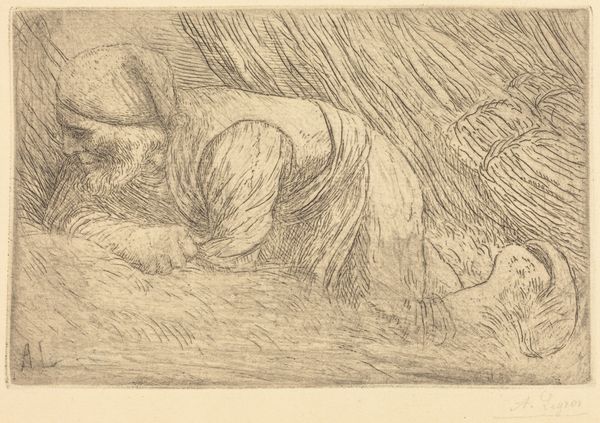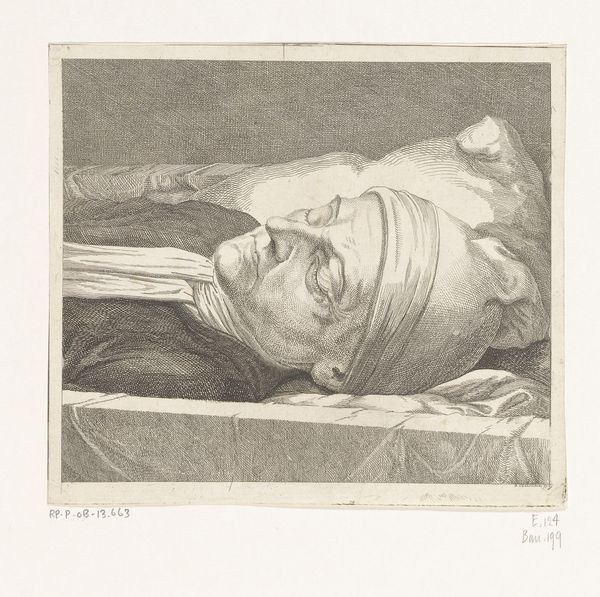
print, etching
#
portrait
# print
#
etching
#
portrait reference
#
realism
Dimensions: height 148 mm, width 187 mm
Copyright: Rijks Museum: Open Domain
Curator: Auguste Danse's etching, "Hoofd van een onthoofde man," made sometime between 1839 and 1909, is quite arresting. Editor: Indeed, that’s putting it mildly! My initial reaction is… intense discomfort. The stark realism is unsettling, amplified by the limited tonal range of the print. Curator: That discomfort is likely intended. As a print, we must consider how its materiality impacted its purpose and dissemination. Etchings allow for the creation of multiple impressions and widespread distribution. Editor: Right. Consider the potential social function of such a work. What public appetite did it fulfill? Or was it made for academic or scientific reference? It certainly reflects a time when the representation of extreme suffering held a different kind of cultural currency. Curator: Precisely. The act of etching, painstakingly drawing into a metal plate, transforms gruesome subject matter through skilled labor. Consider the layers of artistic labor involved. Editor: That makes me think about where this piece might have been displayed. Would it have hung in an artist’s studio? Or in a more public arena, like a medical institution? That setting would fundamentally change how its received. Curator: And given that it's part of the Rijksmuseum collection, it's been re-contextualized again, now situated alongside other historical objects and subject to institutional interpretation. We're influencing its contemporary legacy. Editor: That’s something we contend with every day here in the museum, right? How our decisions, the narrative we construct around pieces like this Danse print, influences our perception of 19th-century imagery in the present. The brutal realism confronts us. Curator: A brutal realism enabled, quite literally, by the tools at Danse's disposal, and the marketplace in which this print found its value. Editor: It reminds us, quite viscerally, that images are never neutral, and their power lies in their cultural life. Thank you for adding the perspective of craft and the work that produced this artwork. Curator: And thank you for providing historical insight into what this piece represented, or might have represented, to different audiences throughout its circulation.
Comments
No comments
Be the first to comment and join the conversation on the ultimate creative platform.
